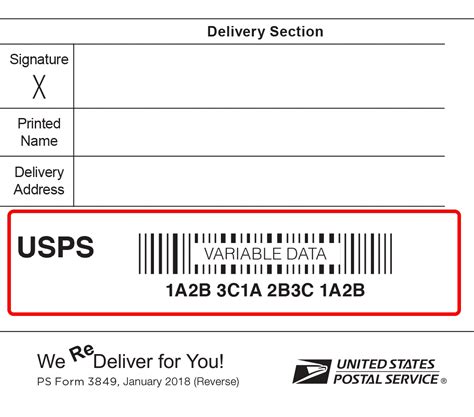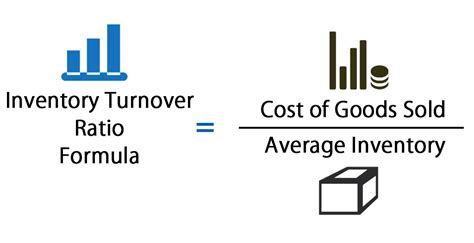Find A Tracking Number

Have you ever found yourself in a situation where you needed to locate a tracking number for a package, but the details were elusive? It can be a frustrating experience, especially when you're eagerly awaiting a delivery. In this comprehensive guide, we will delve into the world of tracking numbers, providing you with the knowledge and tools to successfully find and understand these vital pieces of information. By the end of this article, you'll be an expert at tracking down those elusive digits and keeping tabs on your precious packages.
Understanding Tracking Numbers: A Unique Identifier
Tracking numbers, often referred to as tracking IDs or consignment numbers, are the lifeblood of the shipping and logistics industry. These seemingly random strings of digits and letters hold immense value, providing a unique identifier for each shipment. Much like a fingerprint, no two tracking numbers are the same, ensuring that each package can be traced with precision throughout its journey.
These alphanumeric codes serve as a digital trail, allowing both shippers and recipients to monitor the progress of their packages in real time. From the moment a shipment is picked up to its final delivery, tracking numbers provide a detailed account of its movements, offering peace of mind and a sense of control.
The Anatomy of a Tracking Number
While tracking numbers may appear complex at first glance, they follow a specific format that can be easily deciphered. Let’s break down the components of a typical tracking number to understand its structure.
| Component | Description |
|---|---|
| Carrier Prefix | This segment identifies the shipping carrier, such as UPS, FedEx, or USPS. It often consists of a few letters or digits and helps in quickly identifying the service provider. |
| Shipment Type | Some tracking numbers include a code indicating the type of shipment, such as Ground, Express, or Priority. This provides additional context to the tracking data. |
| Unique Identifier | The core of the tracking number, this part is a unique sequence of digits or a combination of letters and digits. It ensures that each shipment is identifiable and trackable. |
| Checksum | In some cases, a tracking number includes a checksum digit or characters. This is a calculated value that ensures the accuracy of the tracking number, helping to prevent errors during data entry. |
Locating Your Tracking Number: Where to Look
Tracking numbers are provided at various stages of the shipping process, ensuring that both senders and recipients have access to this crucial information. Let’s explore the common places where you might find your tracking number.
Shipping Labels
One of the most common and visible places to find a tracking number is on the shipping label itself. Whether it’s a small package or a large pallet, the shipping label will typically include a section dedicated to the tracking number. This number is often printed in a larger font or highlighted in some way to make it easily identifiable.
Shipping labels are affixed to the package by the sender, and they contain all the necessary information for the carrier to process and deliver the shipment. In addition to the tracking number, these labels may include details such as the sender's and recipient's addresses, the service type, and any special handling instructions.
Shipping Confirmation Emails
In today’s digital age, many shipping carriers and online retailers provide real-time updates via email. When you place an order or arrange for a shipment to be sent, you’ll often receive a confirmation email. Buried within the details of this email is usually the tracking number for your package.
These confirmation emails serve as a convenient way to keep track of your shipments. They often include a link that takes you directly to the carrier's website, where you can enter the tracking number and monitor the progress of your package in real time. Some carriers even offer mobile apps, making it even more convenient to stay updated on the status of your deliveries.
Carrier Websites and Apps
Carrier websites and mobile apps are valuable resources for finding and tracking your packages. Most major shipping carriers, such as UPS, FedEx, and DHL, have dedicated sections on their websites where you can enter your tracking number and receive up-to-date information on your shipment’s status.
These platforms often provide a wealth of information, including the current location of your package, estimated delivery dates, and a detailed history of its journey. Additionally, some carriers offer features like delivery notifications and the ability to redirect or reschedule deliveries, giving you greater control over the process.
Purchase Receipts and Invoices
If you’re the recipient of a package, it’s worth checking your purchase receipts or invoices for any mention of a tracking number. Many online retailers include this information as a matter of course, ensuring that you have the means to track your order’s progress.
Invoices and receipts often provide a wealth of details, including the order number, itemized list of products, total cost, and, of course, the tracking number. This information is particularly useful if you need to reference the shipment for warranty or return purposes.
Customer Support and Call Centers
In cases where a tracking number is not readily available or has been misplaced, don’t hesitate to reach out to the shipping carrier’s customer support or call center. These teams are trained to assist with tracking inquiries and can often provide you with the tracking number based on your order details or account information.
Customer support representatives can access detailed records and locate the tracking number for you. They may also be able to offer additional insights into the shipment's status and provide updates if there are any delays or issues.
Reading and Interpreting Tracking Information
Now that we’ve covered the various methods of finding a tracking number, let’s delve into the world of tracking information. Understanding the data provided by tracking systems can help you anticipate the arrival of your package and address any potential delays or issues.
Tracking Updates and Statuses
Tracking systems provide a wealth of information about the status of your package at different stages of its journey. These updates are typically available in real time or with minimal delay, ensuring that you’re always in the loop.
Common tracking statuses include "In Transit", indicating that the package is on its way to the next destination; "Out for Delivery", which means the package is with the courier and will be delivered shortly; and "Delivered", confirming that the package has reached its final destination.
Some tracking systems also provide more detailed information, such as "Package Picked Up", "In Sorting Facility", or "On Truck for Delivery". These granular updates can give you a better understanding of the package's progress and help you plan accordingly.
Estimated Delivery Times and Delays
Tracking systems often include estimated delivery times, which are calculated based on the shipping method and the distance between the origin and destination. These estimates can be incredibly useful for planning purposes, allowing you to prepare for the arrival of your package.
However, it's important to note that estimated delivery times are just that—estimates. Various factors, such as weather conditions, traffic, or unexpected delays, can impact the actual delivery time. Tracking systems will often update you with any known delays, providing transparency and helping you manage your expectations.
Signature Requirements and Special Instructions
Certain packages may require a signature upon delivery, especially if they contain valuable or sensitive items. Tracking systems often indicate this requirement, ensuring that you or a designated recipient are available to receive the package.
Additionally, tracking information may include special instructions provided by the sender. These instructions could include delivery preferences, such as leaving the package at a specific location if the recipient is not available, or any other relevant notes that could impact the delivery process.
Advanced Tracking Features and Tools
While basic tracking information is invaluable, some shipping carriers and logistics companies offer advanced tracking features and tools that can further enhance your shipping experience.
Real-Time Tracking and Notifications
Real-time tracking is a powerful feature that allows you to follow the journey of your package in real time. With this feature, you receive updates as soon as they become available, providing a near-instantaneous view of the package’s progress.
Many carriers offer notification services that send alerts to your preferred communication channel, such as email or text message. These notifications can keep you informed about important events, such as when your package is out for delivery or when it has been successfully delivered.
Interactive Maps and Delivery Route Visualization
Some tracking systems go beyond simple status updates and provide interactive maps that visualize the delivery route of your package. These maps show the package’s current location and the route it has taken, offering a visual representation of its journey.
This feature can be particularly useful for businesses that rely on efficient logistics and want to optimize their supply chain. It allows for better planning and can help identify potential bottlenecks or areas for improvement in the delivery process.
Package History and Audit Trails
Advanced tracking systems often maintain a detailed history of your package’s journey, providing an audit trail that can be invaluable for auditing and compliance purposes.
This history includes a record of all the events and statuses associated with the package, from the moment it was shipped to its final delivery. It can be particularly useful for resolving disputes, tracking down lost packages, or providing evidence of delivery for warranty or insurance claims.
Troubleshooting Common Tracking Issues
Despite the best efforts of shipping carriers and logistics companies, tracking issues can occasionally arise. Understanding these common problems and knowing how to address them can help ensure a smoother shipping experience.
Missing or Incorrect Tracking Numbers
One of the most common tracking issues is encountering a missing or incorrect tracking number. This can occur for various reasons, such as human error during data entry, system glitches, or issues with the shipping label.
If you suspect that a tracking number is missing or incorrect, it's essential to contact the shipping carrier as soon as possible. They can help verify the shipment details and provide the correct tracking number or resolve any discrepancies.
Tracking System Delays and Errors
Tracking systems are complex and rely on a variety of technologies and data sources. As a result, occasional delays or errors can occur. These issues may manifest as outdated status updates, missing information, or inaccurate estimates.
If you encounter a tracking system delay or error, it's important to remain patient and allow some time for the system to catch up. In most cases, the issue will resolve itself within a reasonable timeframe. However, if the problem persists, contacting the shipping carrier can help provide clarity and potentially expedite the resolution process.
Package Misplacement and Loss
While rare, package misplacement and loss can occur due to various factors, such as human error, theft, or damage during transit. In such cases, tracking systems can play a crucial role in locating the package or determining its fate.
If you suspect that your package has been misplaced or lost, the first step is to contact the shipping carrier. They can investigate the issue and provide updates on the status of the package. In some cases, they may be able to redirect or recover the package, ensuring it reaches its intended destination.
Future of Tracking: Innovations and Trends
The world of logistics and tracking is constantly evolving, with new technologies and innovations shaping the future of package delivery. Let’s explore some of the exciting trends and developments that are set to revolutionize the way we track our shipments.
Blockchain and Smart Contracts
Blockchain technology, known for its secure and decentralized nature, is increasingly being adopted in the logistics industry. By leveraging blockchain, tracking systems can provide an immutable record of a package’s journey, ensuring transparency and security.
Smart contracts, which are self-executing contracts with the terms directly written into code, can be used to automate various processes in the shipping industry. For instance, they can trigger payments upon delivery or automatically redirect packages based on predefined conditions, enhancing efficiency and reducing human error.
Internet of Things (IoT) and Sensor Technology
The Internet of Things (IoT) is transforming the way we interact with the physical world, and its impact on logistics is profound. By integrating IoT sensors into packages and shipping containers, real-time tracking can become even more precise and reliable.
These sensors can monitor a wide range of factors, including temperature, humidity, location, and even the integrity of the package. This data can be used to optimize delivery routes, ensure the safety of perishable goods, and provide valuable insights into the condition of the shipment throughout its journey.
Artificial Intelligence (AI) and Machine Learning
Artificial Intelligence (AI) and Machine Learning (ML) are powerful tools that can revolutionize tracking and logistics. By analyzing vast amounts of data, AI algorithms can predict delivery times, optimize routes, and even anticipate potential delays before they occur.
ML algorithms can learn from historical data to improve the accuracy of predictions and optimize the entire delivery process. This can lead to more efficient operations, reduced costs, and an enhanced customer experience.
Drones and Autonomous Vehicles
The future of delivery may involve drones and autonomous vehicles, which have the potential to revolutionize last-mile delivery. These technologies can provide faster, more efficient, and more flexible delivery options, particularly in remote or hard-to-reach areas.
By leveraging drones and autonomous vehicles, delivery times can be significantly reduced, and the risk of package loss or damage can be minimized. Additionally, these technologies can provide real-time tracking data, offering unprecedented visibility into the delivery process.
Conclusion: Empowering Your Shipping Experience
In the world of shipping and logistics, tracking numbers are the key to a seamless and efficient delivery experience. By understanding how to find, interpret, and utilize tracking information, you can take control of your shipments and ensure a smooth journey from sender to recipient.
From the moment a package is shipped until it reaches its final destination, tracking numbers provide a digital trail that keeps everyone informed and engaged. Whether you're a sender, recipient, or logistics professional, this knowledge empowers you to make informed decisions, address potential issues, and ultimately enhance the shipping process.
As the world of logistics continues to evolve, embracing new technologies and innovations will be crucial for staying ahead of the curve. By staying informed about the latest trends and developments, you can ensure that your shipping experience remains efficient, secure, and tailored to your needs.
How do I find my tracking number if I don’t have the shipping label or confirmation email?
+If you don’t have the shipping label or confirmation email, you can try contacting the sender or the shipping carrier directly. They may be able to provide you with the tracking number based on your order details or account information.
What should I do if my tracking number isn’t working or shows an error?
+If your tracking number isn’t working or shows an error, it’s important to verify that the number is correct and complete. Check for any typos or missing digits. If the issue persists, contact the shipping carrier for assistance. They can help resolve any discrepancies or provide an updated tracking number.
Can I track my package without a tracking number?
+Tracking a package without a tracking number can be challenging, as it is the primary identifier for shipments. However, in some cases, the shipping carrier may be able to locate your package based on other details, such as the sender’s and recipient’s information or the order number. Contact the carrier to inquire about their policies and procedures for tracking without a tracking number.



